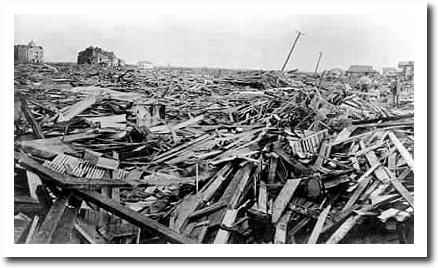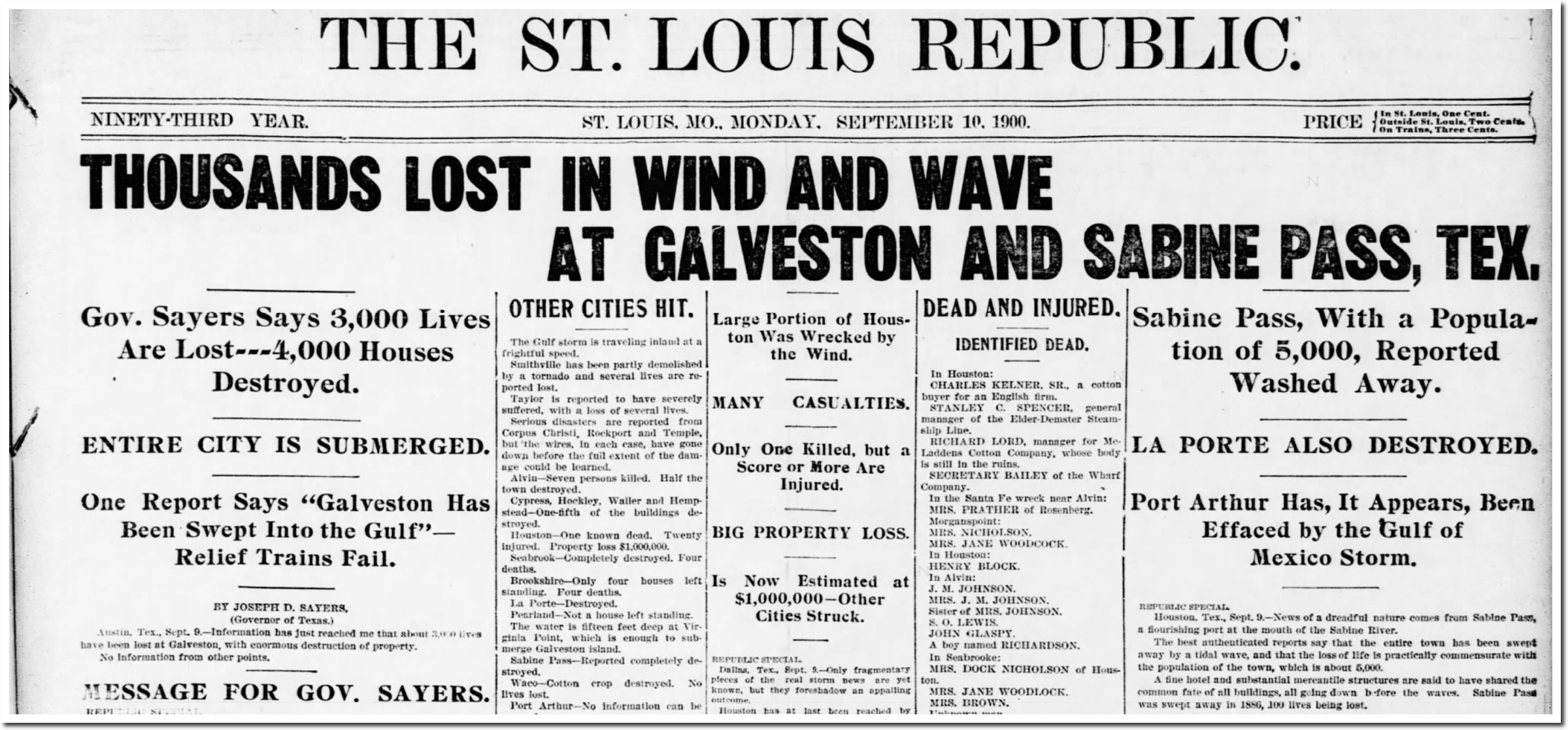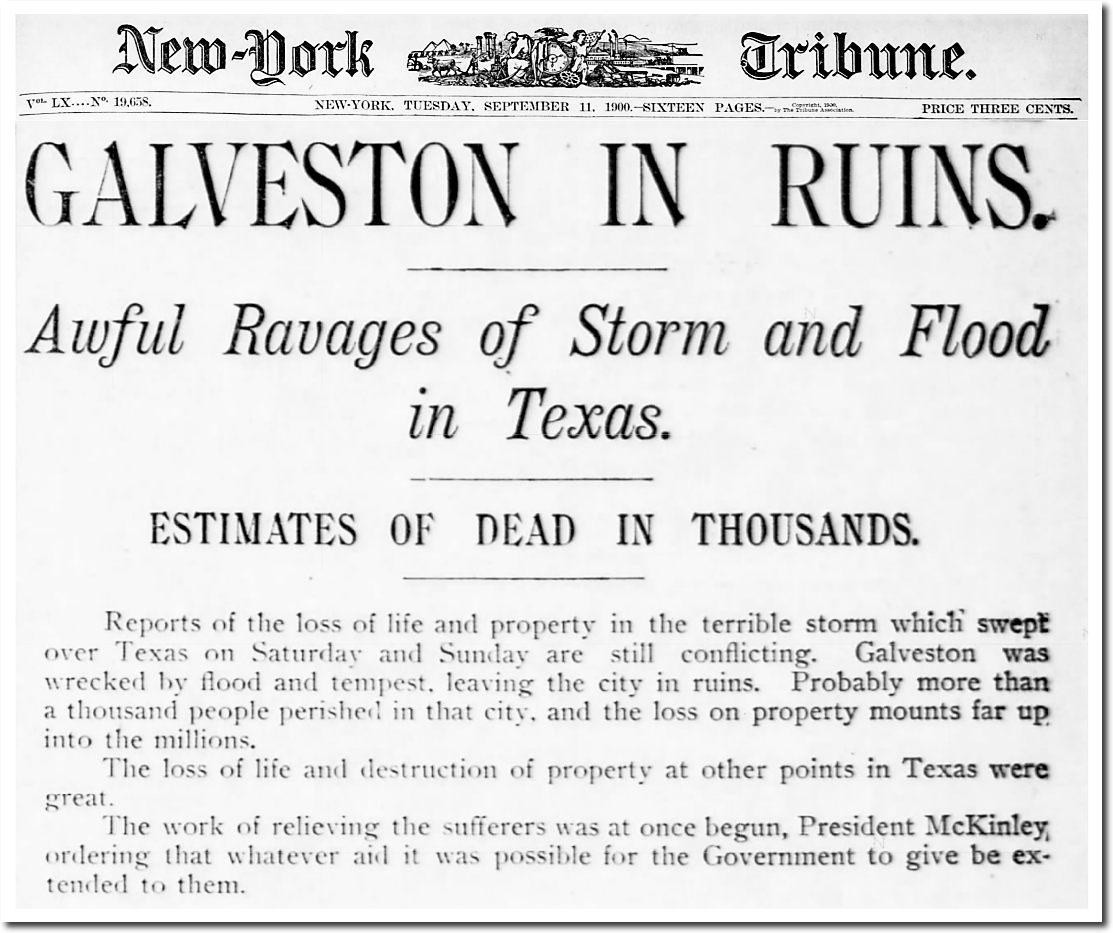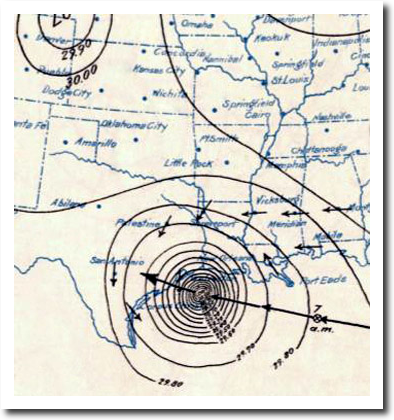On September 8, 1900 the Texas coast was hit by a category 4 hurricane which killed more than 10,000 people and destroyed many cities.
10 Sep 1900, Page 1 – The St Louis Republic at Newspapers.com
11 Sep 1900, Page 1 – New-York Tribune at Newspapers.com
The storm continued across Oklahoma, Kansas, Nebraska, Iowa, Illinois, Wisconsin, Michigan, Ontario and Quebec.
12 Sep 1900, Page 1 – The Brooklyn Daily Eagle at Newspapers.com






